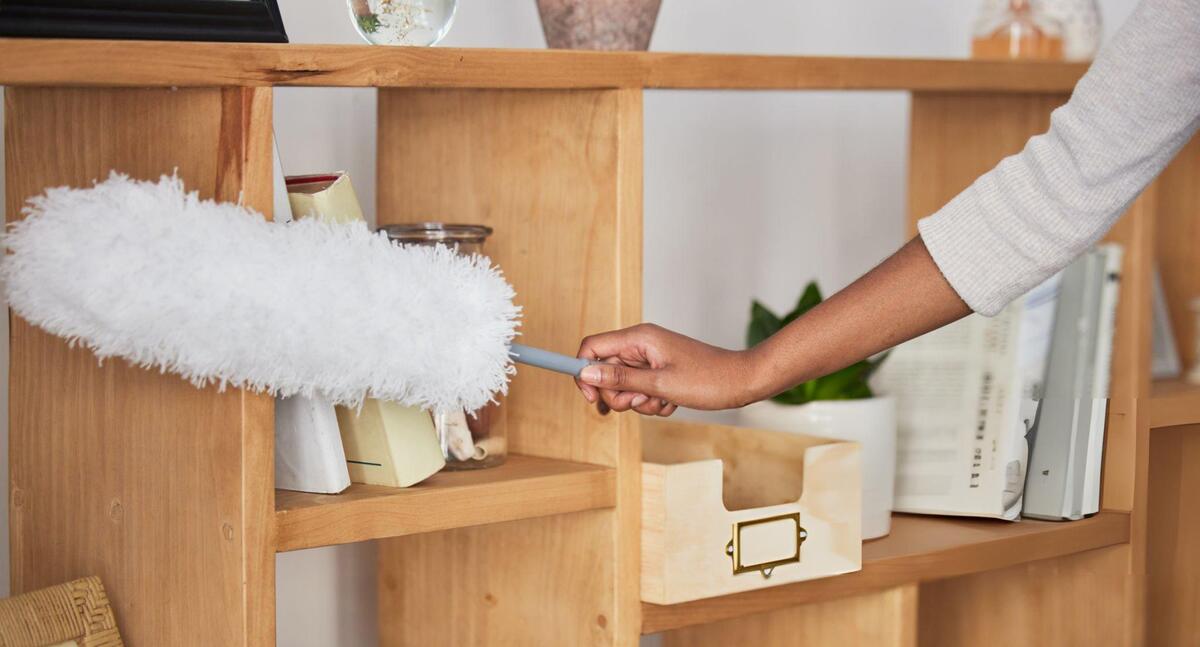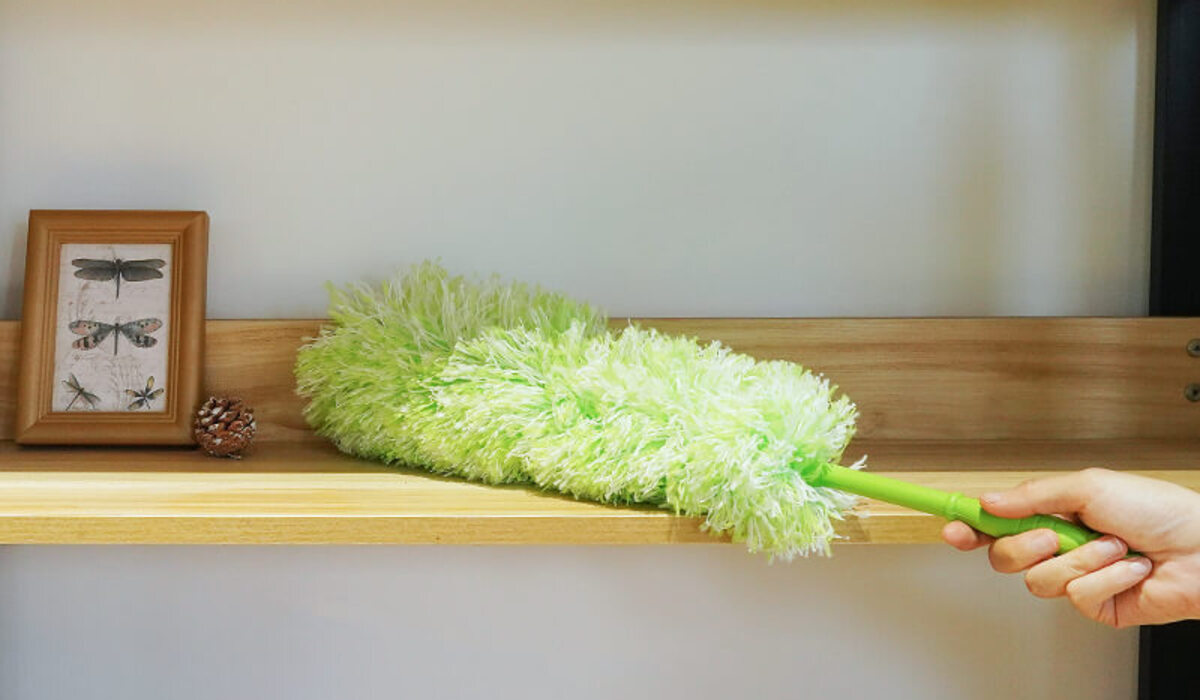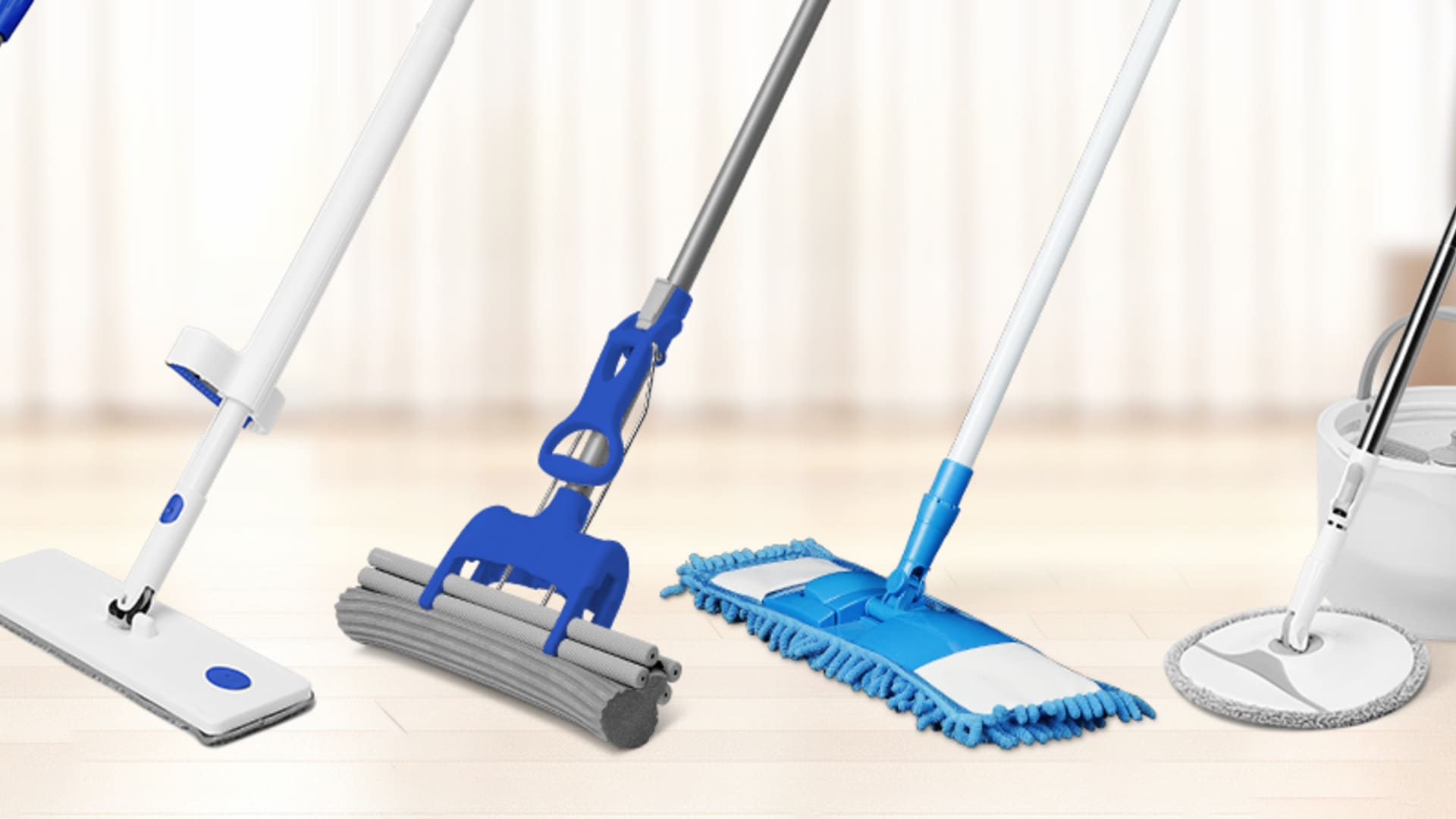Dusters are essential cleaning tools found in almost every household. They come in various types, such as feather, synthetic, and microfiber, each designed to capture and hold dust effectively. However, with frequent use, these dusters can accumulate dirt and debris, eventually requiring thorough cleaning to maintain their functionality. Knowing how to clean a duster can prolong its life and ensure that it continues to work effectively.
Cleaning a duster involves simple materials such as warm water and mild dish soap. The specific method varies depending on the duster’s material, but gentle agitation in a soapy solution is generally effective in removing accumulated dust. For example, when cleaning a synthetic duster, it is important to submerge it in warm water with a few drops of soap solution, and then gently swish it around to release the dirt.
Understanding Your Duster
Dusters come in various materials and styles, each with its cleaning and maintenance requirements. The most common types are feather dusters, microfiber dusters, and synthetic dusters. Knowing the differences between these types can help you provide optimal care.
Feather dusters, most commonly crafted from ostrich feathers, are a popular choice due to their natural ability to attract and trap dust particles. These dusters require gentle handling and occasional cleaning to maintain their effectiveness.
Microfiber dusters have soft, dense fibers that easily conform to different surfaces, making them an ideal choice for a variety of cleaning tasks. They are typically machine washable and quick drying, ensuring easy maintenance and a long lifespan.

Synthetic dusters often resemble feather dusters in shape and function but use synthetic fibers instead of feathers. These dusters are known for their affordability and can be cleaned using mild soap and water.
When cleaning your duster, it’s essential to consider the type of duster you own. Feather dusters should be treated delicately, and a simple shake or light brushing can remove accumulated dust. For a more thorough cleaning, soaking in warm, soapy water for a few minutes, followed by gentle rinsing and air-drying, is recommended.
Microfiber dusters can usually be cleaned in a washing machine, while synthetic dusters can be gently washed in warm soapy water, rinsed, and air-dried. Always consult the manufacturer’s instructions for specific cleaning recommendations for your duster. Taking proper care of your duster will not only extend its lifespan but also maintain its effectiveness in keeping your home clean and dust-free.
Preparing for Cleaning
Before attempting to clean a duster, it is essential to determine the type of duster in question. Dusters can be made from natural feathers, such as ostrich, turkey, or goose, or from synthetic materials like microfiber. The cleaning method will vary depending on the duster type.
When cleaning a feather duster, the key is to use a gentle approach to avoid damaging the delicate feathers. Mild detergents, such as dish soap or specially formulated wool wash, are advised for this task. On the other hand, synthetic dusters can handle slightly more robust cleaning methods, including machine washing in some cases. It is important to double-check the manufacturer’s instructions before proceeding.
Next, gather the necessary supplies for cleaning your duster. This includes a gentle detergent, a sink or container filled with lukewarm water, and, if necessary, a washing machine for synthetic dusters. Ensure that the washing environment is clean and free from debris to avoid introducing further dirt or contaminants to the duster during the cleaning process.
Lastly, if your duster is removable from its wand or handle, remove it before starting the cleaning process to achieve a more thorough clean. Make sure to keep track of any small parts or attachments to avoid losing them while washing your duster.
Cleaning Techniques
Shaking off Dust
Before proceeding with any cleaning method, it is essential to shake off loose dust from the duster. Hold the duster by the handle and gently shake it outside or over a trash can to dislodge any dust particles. This will make the subsequent cleaning process more effective.
Hand Washing
Hand washing is a gentle method of cleaning different types of dusters, including feather dusters. Fill the sink with warm soapy water using a mild detergent (such as dishwashing soap), and then gently immerse the dishcloth head in the water to remove dirt and dust. Once the duster is thoroughly rinsed, drain the water from the sink, place the duster under the faucet, and gently rinse with warm water. After rinsing, shake off excess water and let the duster air dry completely before using it again.

Machine Washing
For synthetic dusters, machine washing can be a suitable option. Before washing, check the manufacturer’s instructions to ensure the duster is machine-washable. Place the duster in a mesh laundry bag to prevent damage during the wash cycle. Use a gentle cycle with cold water and mild detergent. After washing, allow the duster to air dry.
Using a Vacuum Cleaner
Another practical method to clean dusters is by using a vacuum cleaner. Attach the upholstery or brush attachment to the vacuum hose and gently run the vacuum over the duster’s surface. With this technique, it is important to be gentle to avoid damaging delicate feathers or fibers on the duster. Vacuuming is a quick solution for removing dust and debris, especially when a duster is not too dirty.
Drying the Duster
After cleaning a duster, it is essential to ensure it dries properly to retain its effectiveness and avoid damage. There are several methods to consider when drying your duster. This section discusses two popular methods: Manual Drying and Sun Drying.
Manual Drying
Manual drying involves using tools or techniques to speed up the drying process, such as employing a hairdryer or hanging the duster in a well-ventilated area. When using a hairdryer, make sure to set it in a cool setting to avoid damaging the duster’s fibers or feathers. Similarly, when hanging the duster in a dry area, choose a place with good airflow to help evaporate water faster. Remember to avoid placing the duster near a direct heat source, as this could cause potential damage to the materials.
Sun Drying
Sun drying is a more natural approach that involves placing the duster in direct sunlight to allow the sun’s warmth to evaporate any moisture remaining in the fibers or feathers. To sun dry your duster, find a clean, outdoor location where the duster can receive ample sunlight. Attach the duster to a clothesline or place it on a drying rack, ensuring it has sufficient space. Another benefit of sun exposure is that it is a natural disinfectant that can further ensure that your cloth is cleaned and disinfected the next time you use it. However, be cautious not to leave the duster in the sun for too long, as overexposure could lead to fading or damage to the materials.
Proper drying techniques play a crucial role in extending the lifespan of your duster and maintaining its effectiveness. Choosing the appropriate method, whether it is manual drying or sun drying, will depend on personal preferences and drying conditions. The key is to ensure the duster is thoroughly dried before storing or using it again.
Additional Tips
Regular Cleaning
It’s essential to clean your duster regularly to maintain its effectiveness and promote a healthier living environment. Routine cleaning can be done easily by either shaking out the duster outdoors to release dust and dirt particles or using a vacuum cleaner to remove the dust. For a more thorough cleaning, washing your duster in warm water with a drop or two of dish soap is recommended. Once you’ve rinsed it thoroughly, let it air dry to prevent any damage.

Avoiding Damage
Taking proper care of your duster can extend its lifespan and improve its cleaning performance. When cleaning synthetic dusters, opt for gentle hand washing instead of using the washing machine to avoid potential damage. For feather dusters, specifically ostrich feather dusters, gentle hand washing with a mild detergent is ideal. Remember to rinse thoroughly to eliminate any soap residue that may attract more dust. Store your duster in a cool, dry place to prevent mold, mildew, and other damage.
Stubborn Dust Removal
For stubborn dust that does not come off with regular cleaning methods, you can try gently removing dust particles with a soft bristle brush or damp cloth. Be cautious when using any liquid or cleaning solution on your duster, as it may cause irreversible harm. Always ensure that you follow the manufacturer’s guidelines and maintenance instructions to prevent damage to your duster and maintain its effectiveness.
Maintaining Your Cleaning Tools
Keeping your duster clean not only enhances its efficiency but is also crucial for maintaining overall home hygiene. As we discussed in our article on how to clean a mop, regularly cleaning all your cleaning tools is essential for maintaining a clean home environment. This includes not just dusters and mops, but also vacuum cleaners. In fact, learning how to clean a vacuum cleaner is just as important for maintaining a healthy home. Whether it’s a duster, a mop, or a vacuum cleaner, proper maintenance can extend the life of your tools and ensure they perform at their best every time you use them. By correctly cleaning and caring for your cleaning tools, you can more easily keep your home spotless, creating a healthy and comfortable living space.

Conclusion
To maintain the effectiveness of a duster, regular cleaning is essential. One effective method for cleaning a duster is soaking it in warm, soapy water. After submerging the duster in the solution, gently agitate it to release trapped dirt and dust particles.
If dealing with a feather duster, consider gently washing the duster head in soapy water and rinsing it under running water. Make sure to shake out any excess water and let it air dry. Mild dish soap is sufficient for this task.
For a California duster, soaking and gently cleaning in lukewarm water with mild soap or a specialized cleaning solution is recommended. Soak the duster for 5-10 minutes based on the soil level, and then gently stir during this process.
Remember to always allow your duster to air dry, as it helps maintain its shape and effectiveness. Using these cleaning techniques will ensure your duster remains in optimal working condition and continues to effectively remove dust and dirt from various surfaces.












